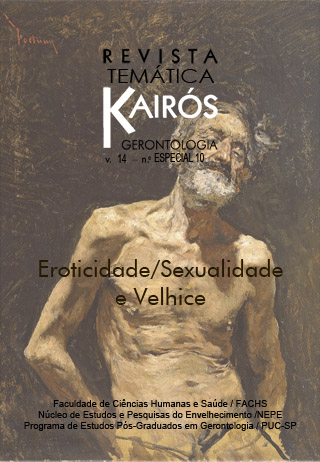Sexualidade e Envelhecimento: discussões sobre a AIDS
DOI:
https://doi.org/10.23925/2176-901X.2011v14iEspecial10p205-220Palavras-chave:
Envelhecimento, Idoso, Sexualidade, AIDSResumo
O aumento da população idosa assim como da liberação sexual fez com que muitos tabus fossem quebrados, e o maior acesso inclusive de medicamentos estimulantes da atividade sexual proporcionou aos idosos o sentimento de maior segurança para manter a atividade sexual; isso acabou gerando um aumento de casos de AIDS nesses indivíduos. A AIDS é uma doença causada pelo vírus HIV que compromete o sistema imune do organismo e apresenta-se como uma das mais complexas e desafiadoras pandemias já enfrentadas pela humanidade. A sexualidade nos idosos era negligenciada por parte de pesquisadores, profissionais e sociedade em geral, até muito recentemente; hoje é motivo de preocupação. Baseado nisso, o objetivo deste estudo foi realizar uma reflexão sobre o processo de envelhecimento da população brasileira e a elevação do índice de infecção do vírus HIV entre os idosos. Pretende-se realçar que, apesar do seu aumento, esse segmento ainda parece ser invisível aos olhos da sociedade e do Estado e que a frequência e a qualidade da atividade sexual não vêm sendo acompanhadas de informações e ações voltadas para a prevenção de doenças sexualmente transmissíveis relativamente a essa parcela da população.Downloads
Publicado
2012-06-13
Como Citar
Silveira, M. M. da, Batista, J. S., Colussi, E. L., & Wibelinger, L. M. (2012). Sexualidade e Envelhecimento: discussões sobre a AIDS. Revista Kairós-Gerontologia, 14(Especial10), 205–220. https://doi.org/10.23925/2176-901X.2011v14iEspecial10p205-220
Edição
Seção
Artigos


